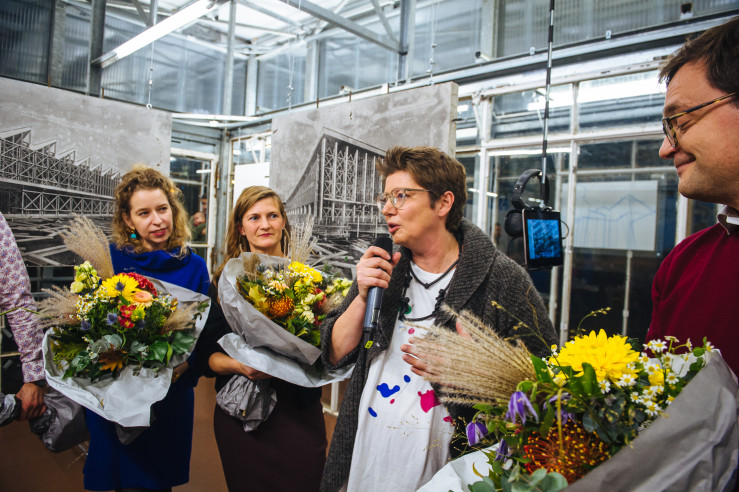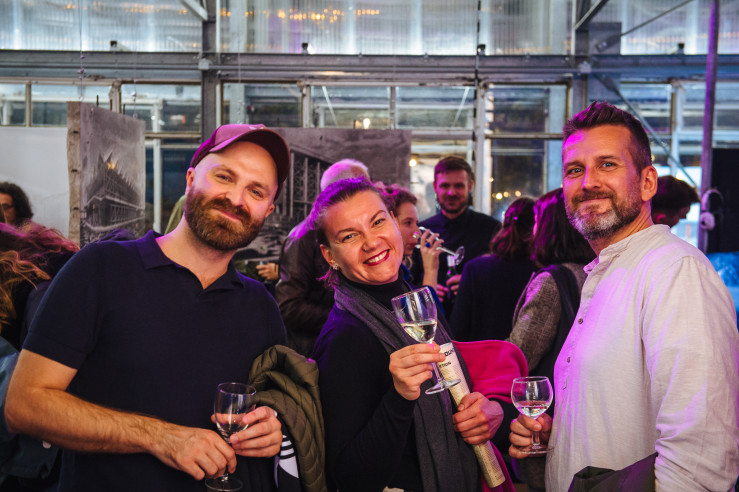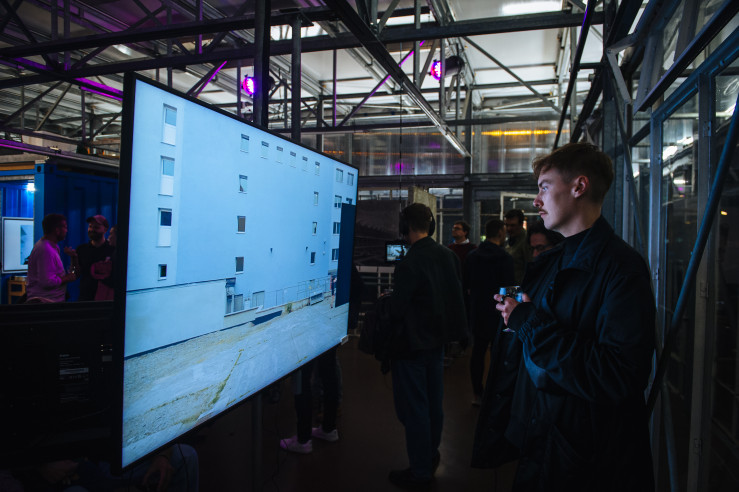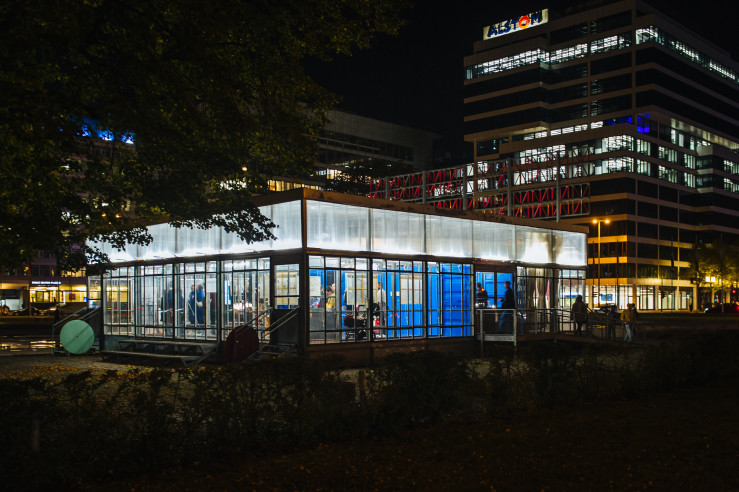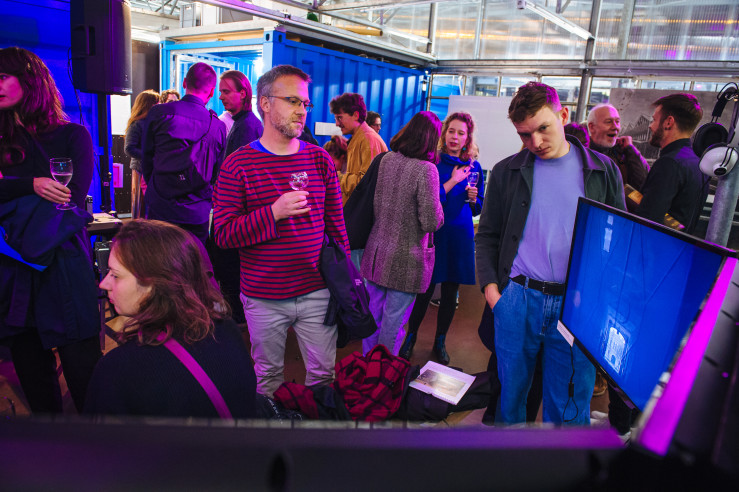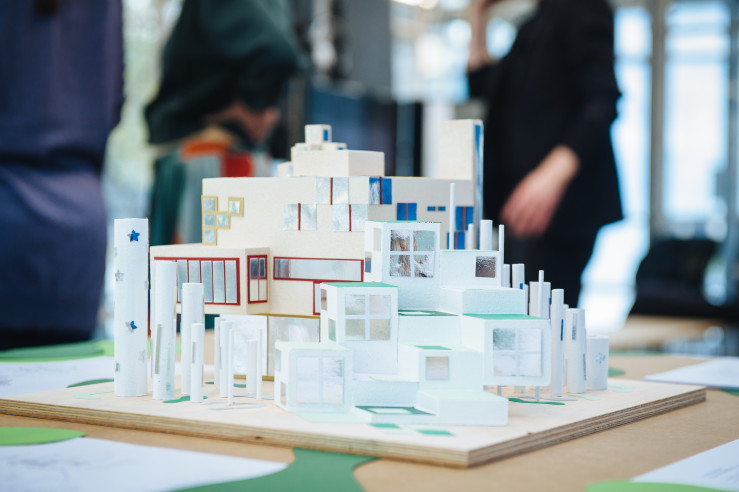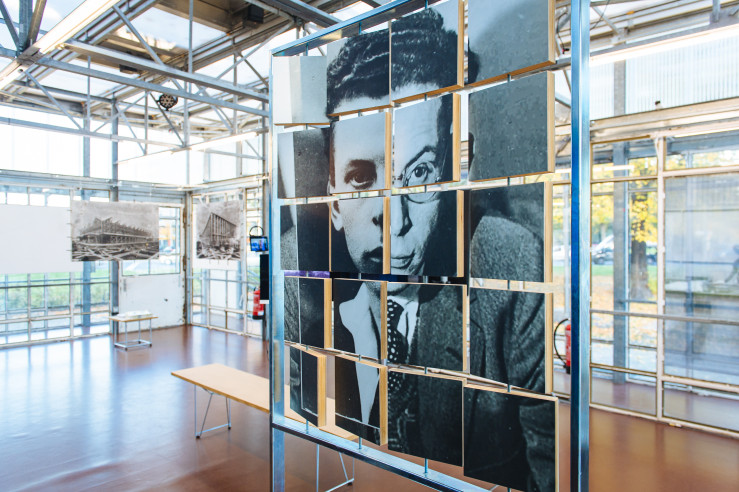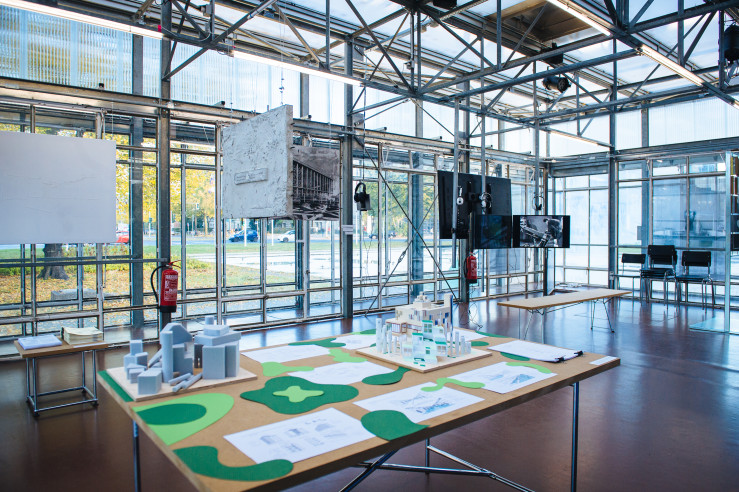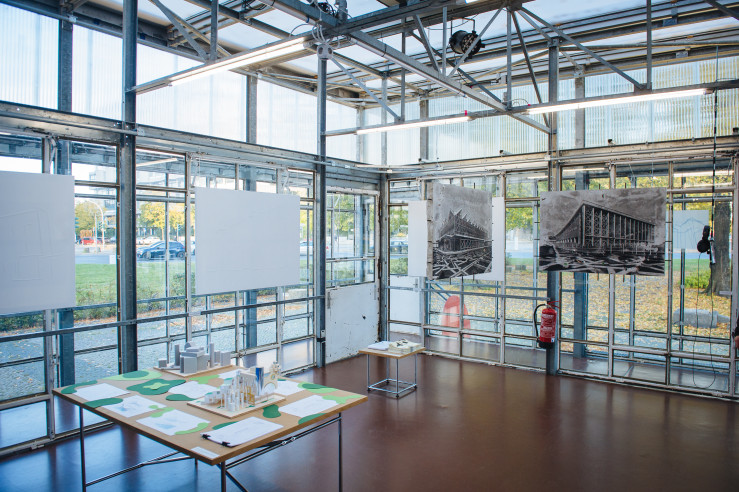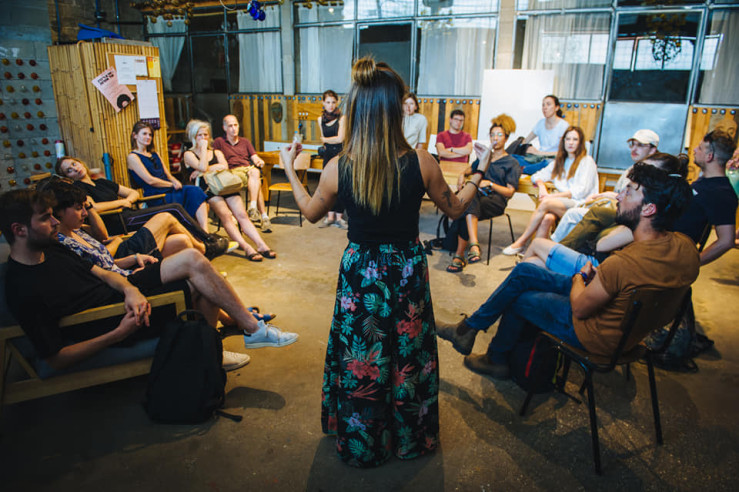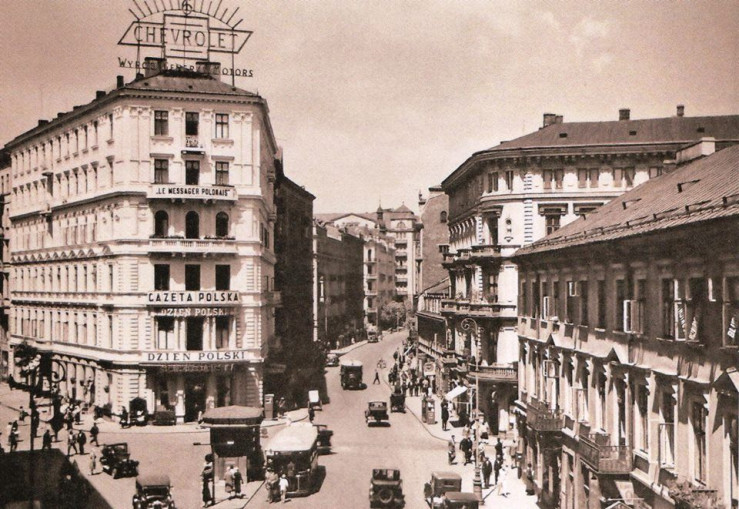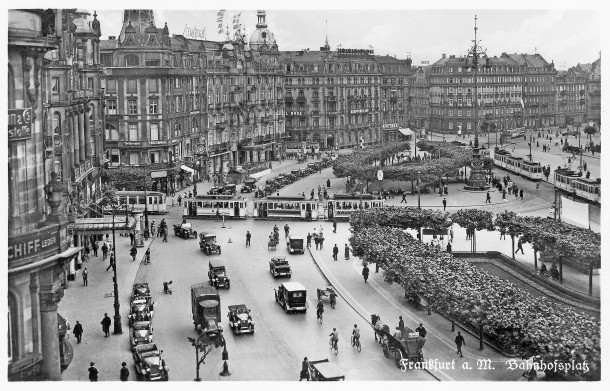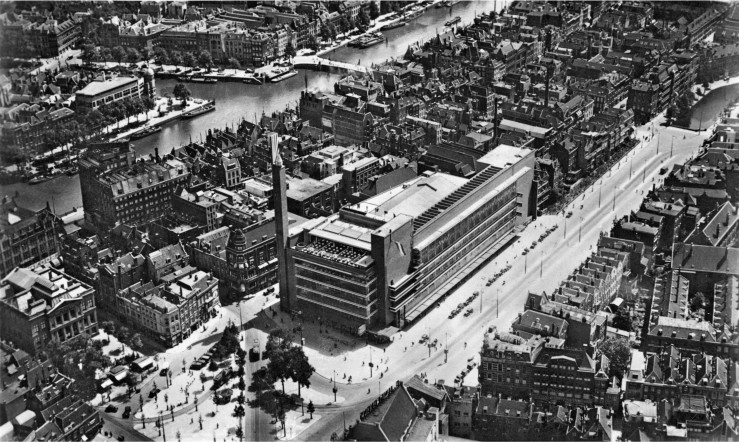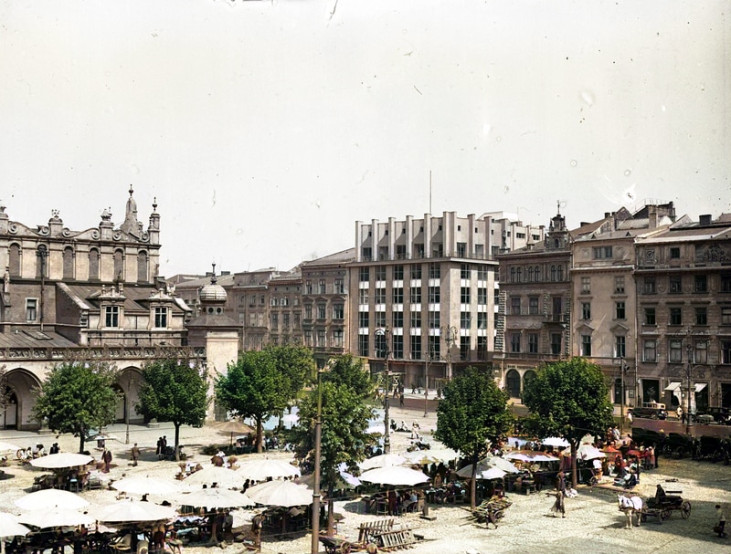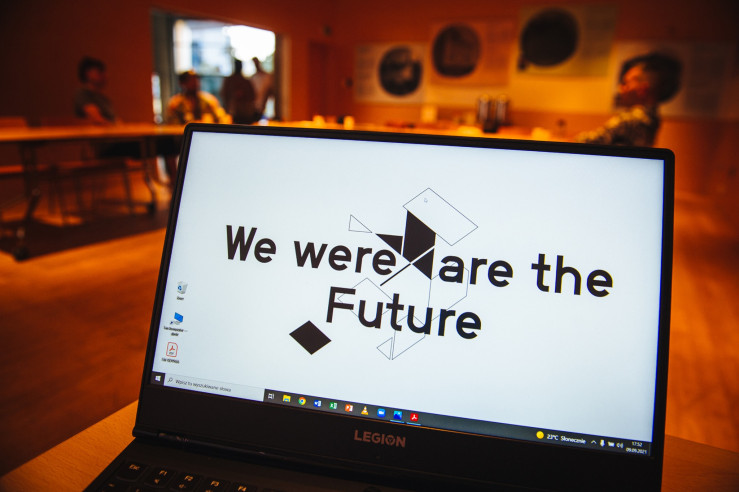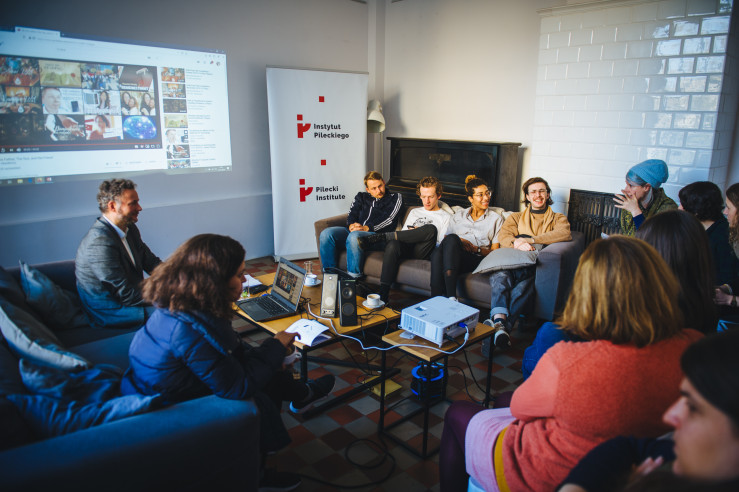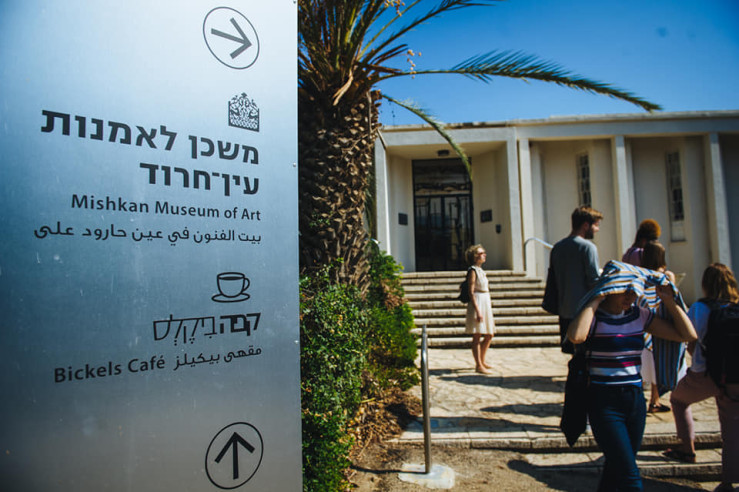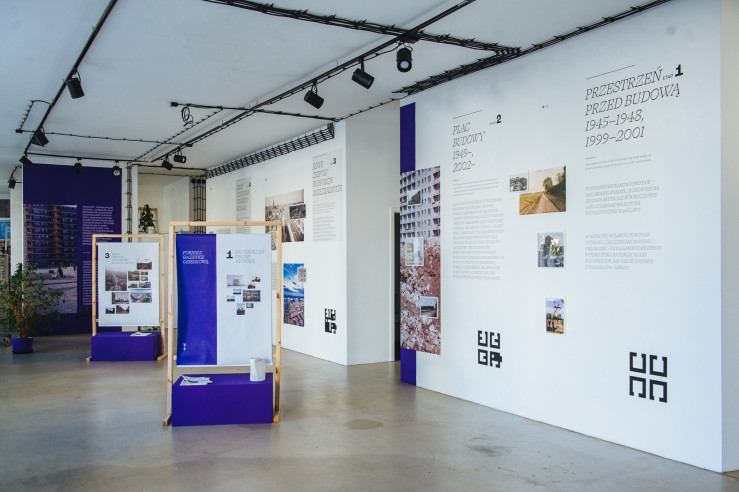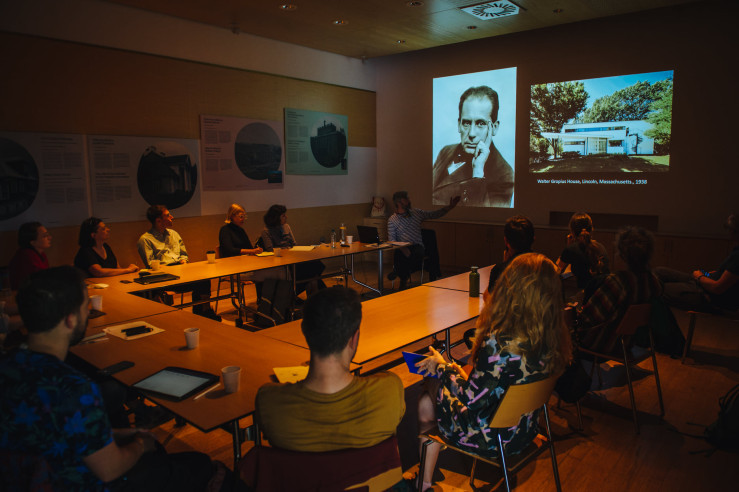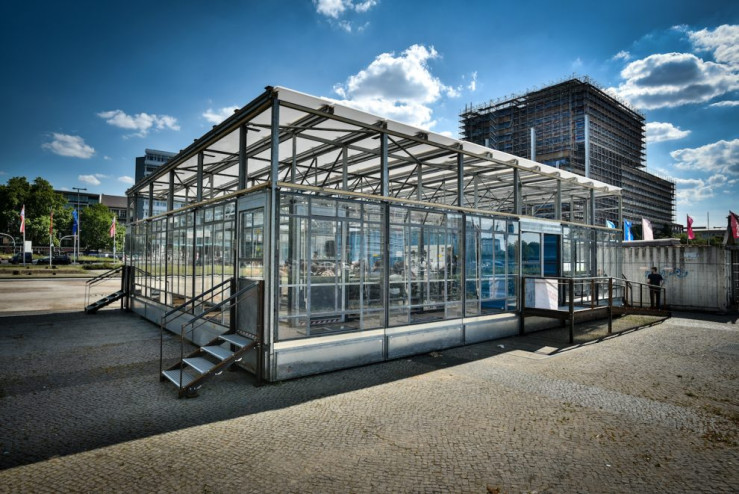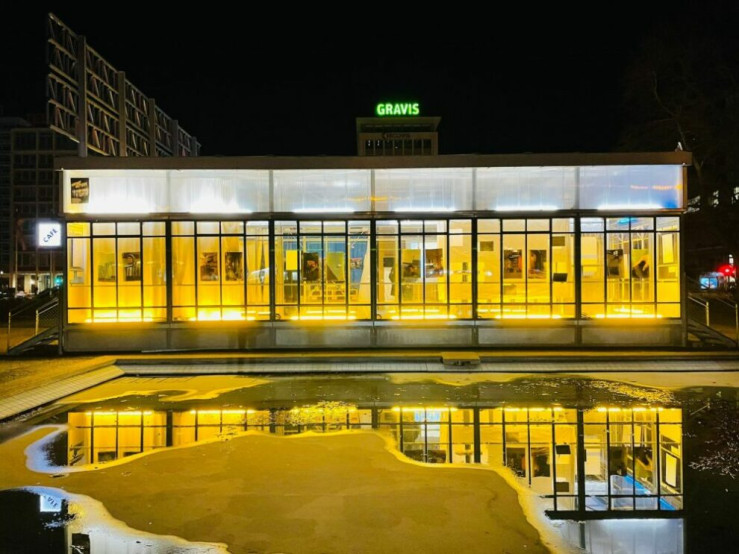Finissage of the "Soft Ground" exhibition - Instytut Pileckiego
25.11.2023 (Sat) 18:00
Finissage of the "Soft Ground" exhibition
The event will be accompanied by a presentation of the project "Rhythms of Living"
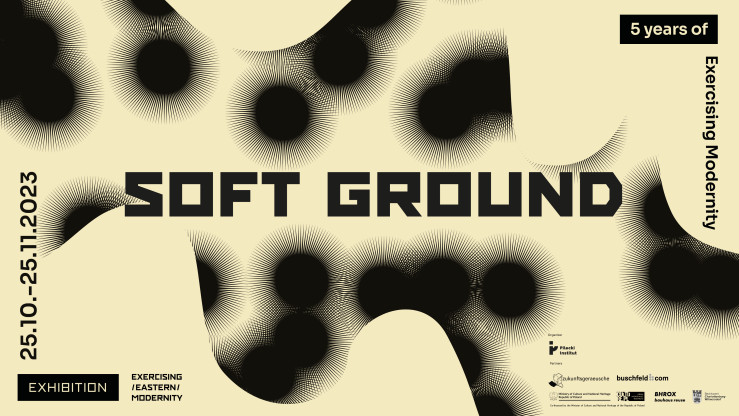
Photos: (C) Grzegorz Karkoszka
New Exercising Modernity exhibition: "Soft Ground"
The Finissage of the "Soft Ground" exhibition marking the fifth birthday of our Exercising Modernity programme
24.11, 18.00 | BHROX bauhaus reuse, Ernst-Reuter-Platz, 10587 Berlin
The event will be accompanied by a presentation of the project "Rhythms of Living"
Organizer: the Pilecki Institute in Berlin
Partners: BHROX bauhaus reuse, Adam Mickiewicz Institute
Curators: Małgorzata Jędrzejczyk, Aleksandra Janus
Artists whose works are featured in the exhibition: Artists: Zofia Janina Borysiewicz, Laure Catugier, Michał Kowalski, Vinicius Libardoni, Daphna Noy, Aurélie Pertusot, Marcin Szczodry, Agata Woźniczka, Yael Vishnizki-Levi
Co-financed by the Minister of Culture and National Heritage of the Republic of Poland.
The exhibition is the result of a critical and interdisciplinary reflection on modernism undertaken within five years of the Exercising Modernity project. The invited artists, the graduates of the Exercising Modernity Academy in the years 2018–2022, employ various research tools and artistic methods to analyze places, objects and biographies. They delve into lesser-known, underreported, or less obvious aspects of modernism and its relationship with modernity and modernization processes. By translating these phenomena into contemporary artistic imagery, they aim to cast new light on modernism, both its history and its contemporary ways of understanding.
The fundamental principles of modernity, which include the pursuit of change and development, served in the early 20th century as the foundation for the creation of not only new political borders, modern cities, and industrialization projects, but also societies and visions of the new man. These ideas were also embodied in the concepts of modern architecture – functional, constructed from new materials, and offering a unique experience of time and space.
In the 1920s and 1930s in cities such as Dessau, Frankfurt am Main, Warsaw, Krakow, Tel Aviv, Kharkiv, Kaunas, or Rotterdam, discussions centered around how to build and furnish housing more efficiently, more economically, more rationally and in line with the homeowner’s needs.
These discussions shared an interest in the demands for rational organization, affordability, and more economical methods of production. But their aim was not only to transform the architectural infrastructure. They also manifested a quest for new rhythms of life and became expressions of dreams, hopes, and faith in progress.
Yet, as Marci Shore's texts suggest, modernity is also 'a source of suffering'. Its dual nature encompasses both a drive for reform, practicality, and progress, as well as dark sides that bring danger, uncertainty, fragmentation and existential disjunction. It is this ambiguous status of modernity that the artists participating in the exhibition “Soft Ground” turned their gaze to. Zofia Borysiewicz, Laure Catugier, Michał Kowalski, Vinicius Libardoni, Daphna Noy, Aurélie Pertusot, Marcin Szczodry, Yael Vishnizki-Levi, Agata Woźniczka taking as their point of departure the spaces of cities, architecture, visual and material traces left in the urban fabric, shifted their attention to what existed on the periphery. Instead of linearity, legibility, distinct boundaries and a clear structure, they started to explore soft meandering lines, randomness, fluidity and blurring contours. Their focus extended to ideas that shaped everyday life a century ago, but whose afterimages can still be found today. Through these ideas, the artists engaged in a critical reflection on the legacy of modernism, attempting at the same time to gain insight into present days.
The exhibited works encompass a variety of techniques and media, including movement and body-engaging performative actions, photography, drawing, sculpture, installation, and film. The invited artists not only represent different countries (Brazil, Israel, France, Germany, Poland, United States), but also refer to different geographical contexts, introducing multiple narratives that encourage us to consider modernism and modernity as a mosaic of experiences, his-/herstories, and phenomena.
The exhibition features selected artists, researchers, designers and thinkers who took part in subsequent editions of the Exercising Modernity Academy and Scholarship program over the past five years. It is also an attempt to present to the wider audience the kind of reflection that is being encouraged and facilitated by the Exercising Modernity project.
The Venue
The exhibition takes place at the BHROX bauhaus reuse, a site which encourages to experiment and to reflect on the origins and aftermath of modernism, and the closely related principles of modernity.
The “modern comforts” bear ambivalences, whereupon the resilience of modern values is striking for social emancipation, gender equality, social justice, or democratization. Modernism’s critical stance against societal and spatial deficits faces challenges which – though they have changed over time, both dramatically and slightly – in many ways still remain unsolved. On the fringe between disciplines concerned with built environment and societal development, it is artistic projects being able to ask questions which hit on the ambivalences and revitalize the critical core of modernism.
The main goal of the BHROX curatorial program is to foster a diverse and transnational view on the multifaceted development of modernism and the diversity of its protagonists and today’s actors. A special focus is on the genesis of modernism in Central Europe and the need to establish trans-European and global networks, dialogue, and co-creation. Both the exhibition that incorporates different backgrounds, approaches, and intensities and the “Exercising Modernity” program support this understanding.
Exercising Modernity
Exercising Modernity is an interdisciplinary intellectual exchange on modernisms and modernity, with the focus on art and architecture, exploring how ideas of modernity were reflected in various social and political spheres. The program is aimed at discussing the Polish and Eastern European modernist heritage in a new, interdisciplinary way, in the context of global modernisation processes that took place in other parts of the world.
The project examines the role of culture and architecture in shaping the societies, cities and states in this region of the world. Exercising Modernity is devoted to historical and contemporary methods of understanding Central and Eastern Europe and aims at critical reflection on the legacy of modernisms and modernity, the ideas of East and West seen through the lenses of various political, geographical, and cultural conceptualisations of the borders between them over the 20th and in the 21st century.
The project pays special attention to culture, and more specifically to architecture, considered as a unique field of various intersecting perspectives, ambitions, concerns and hopes relevant in the formation of the 20th-century world.
The main elements of the Exercising Modernity project are the Academy and the Cultural Scholarship Programme, which is organised annually and addressed to the graduates of the Academy. In addition, Exercising Modernity is also a program of public events, including lectures, discussions and exhibitions organised in cooperation with local and foreign partners.
About Pilecki Institute Berlin
The Pilecki Institute is simultaneously a research institute, a digital archive, a history museum and an education center. Our work seeks to help defend the values of democracy and freedom against historical oblivion, as well as unveil a new, more inclusive perspective on the history of Europe by shedding light on the Polish experience of the 20th century. Our aspiration is to create a place for interdisciplinary and international reflection on the key issues of the 20th century: the history of the two main totalitarian regimes – the Soviet Union and Nazi Germany, the fragility of freedom and the intricate, multifaceted history of modernity. The Pilecki Institute also aims to promote interest in the region of Central and Eastern Europe as a whole.
About BHROX bauhaus reuse
BHROX bauhaus reuse is a participatory urban laboratory and public center for transdisciplinary education, research and performative projects. It is located on the roundabout of Ernst-Reuter-Platz in Berlin. The glass pavilion consists of reused façade elements from the Bauhaus Dessau, from its major post-war renovation in 1976. The BHROX bauhaus reuse is a project by zukunftsgeraeusche, in cooperation with the Charlottenburg-Wilmersdorf district of Berlin and a pilot platform for the Charlottenburg campus in cooperation with TU Berlin and UdK Berlin as well as with a large number of partners and supporters – all participants and further information can be found at: www.bauhaus-reuse.de
About Adam Mickiewicz Institute
Adam Mickiewicz Institute is a national cultural institution, whose goal is to build a lasting interest in Polish culture around the world. The institute works with foreign partners and initiates international cultural dialogue in line with the goals and aims of Polish foreign policy. The institute has put on cultural projects in 70 countries on 6 continents. AMI is funded by the Ministry of Culture and National Heritage.
The institute's flagship brand CULTURE.PL – an up-to-date cultural news service, discussing the most interesting events and phenomena related to Polish culture – offers articles and news in three languages: Polish, English, and Ukrainian.
Colophon
Artists: Zofia Janina Borysiewicz, Laure Catugier, Michał Kowalski, Vinicius Libardoni, Daphna Noy, Aurélie Pertusot, Marcin Szczodry, Agata Woźniczka, Yael Vishnizki-Levi
Curators: Dr. Małgorzata Jędrzejczyk, Dr. Aleksandra Janus
Curatorial cooperation BHROX: Robert K. Huber
Exhibition producers: Witold Okun (Pilecki Institute), Karolina Głowińska (Pilecki Institute), Peter Winter (BHROX)
Organizer: the Pilecki Institute in Berlin
Partners: BHROX bauhaus reuse, Adam Mickiewicz Institute, buschfeld.com graphic and interface design[a]
Graphic design: Pigalopus - Malwina Borowiec, Karolina Chodur
Translations and proofreading: Aleksandra Arumińska, Julia Niedzielko, Lidex
Exhibition architecture: zukunftsgeraeusche
Exercising Modernity program curatorial team: Hanna Radziejowska, Dr. Małgorzata Jędrzejczyk, Dr. Aleksandra Janus
Head of the Modernity Exercise programme: Dr. Małgorzata Jędrzejczyk
Exercising Modernity program coordination: Witold Okun
The Directors Board of the Pilecki-Institut Berlin: Hanna Radziejowska, Mateusz Fałkowski
